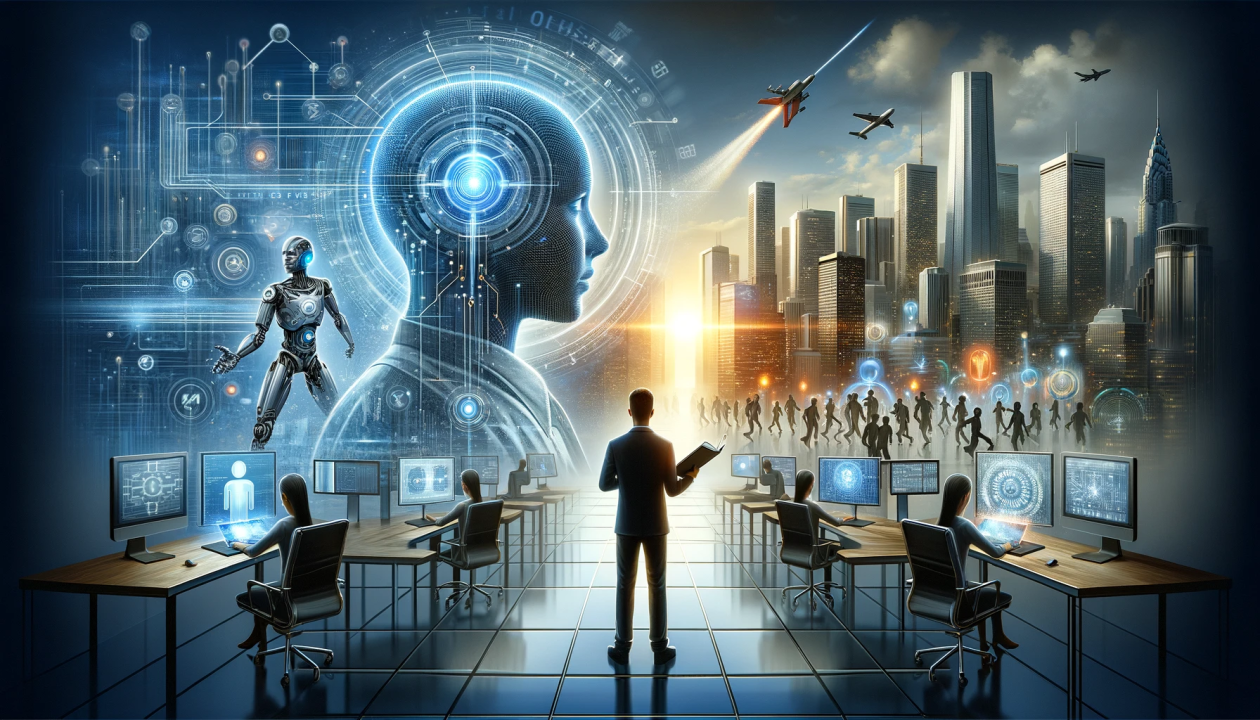AI and Automation in the Workforce: Navigating the Future of Work
Artificial Intelligence (AI) and automation are transforming industries and redefining the nature of work. From self-driving vehicles to sophisticated algorithms that optimize supply chains, these technologies promise increased efficiency and productivity. However, they also raise significant questions about job displacement, workforce skills, and economic inequality. This article explores the impact of AI and automation on the workforce, examining both the opportunities and challenges they present.
1.The Promise of AI and Automation
AI and automation offer substantial benefits across various sectors:
Increased Efficiency : Automation can streamline repetitive tasks, reduce errors, and speed up processes. For example, manufacturing robots can perform precise, repetitive tasks faster and more consistently than human workers, leading to higher productivity and reduced costs.
Enhanced Innovation : AI-driven insights can lead to new product developments and business models. In finance, algorithms analyze vast datasets to uncover investment opportunities or detect fraud, while in healthcare, AI aids in diagnosing diseases and personalizing treatment plans.
Improved Customer Experience : AI-powered chatbots and virtual assistants provide 24/7 customer support, handling routine inquiries and freeing human agents to address more complex issues. Personalization engines recommend products and services based on individual preferences, enhancing user satisfaction.
2. Job Displacement and Transformation
While AI and automation can create efficiencies, they also pose risks to certain jobs:
Displacement of Routine Jobs : Jobs that involve repetitive, routine tasks are particularly vulnerable to automation. For instance, data entry clerks, assembly line workers, and telemarketers are at risk of being replaced by AI-driven systems and robots.
Job Transformation: AI and automation are not just replacing jobs but also transforming them. Workers in roles such as customer service or administrative support may find their tasks augmented by AI tools, which handle routine aspects of their jobs, allowing them to focus on more strategic or interpersonal functions.
Emergence of New Roles: As so jobs become obsolete, new roles and opportunities are created. The rise of AI necessitates roles in data science, machine learning engineering, and AI ethics. Additionally, industries focused on developing and maintaining automation technologies will continue to grow.
3. Skills and Training
The shift toward an AI-driven workforce highlights the importance of skills development and training:
Reskilling and Upskilling: Workers need to acquire new skills to remain competitive. Reskilling programs aim to teach individuals new competencies, while upskilling focuses on enhancing existing skills to adapt to changing job requirements. Training in areas such as digital literacy, data analysis, and AI management will be crucial.
Education and Lifelong Learning: Educational institutions and organizations must adapt curricula to include AI and automation-related subjects. Lifelong learning will become increasingly important as technology evolves, requiring workers to continuously update their skills.
Collaboration Between Industry and Education: Partnerships between businesses and educational institutions can ensure that training programs are aligned with industry needs. This collaboration can help bridge the gap between academic learning and practical skills required in the workforce.
4. Economic and Social Implications
The impact of AI and automation extends beyond individual job roles to broader economic and social dimensions:
Economic Inequality: Automation can exacerbate economic inequality if its benefits are not equitably distributed. High-skilled workers and technology-savvy professionals may see increased opportunities, while low-skilled workers face job displacement and wage stagnation. Addressing this inequality requires targeted policies and support for affected communities.
Regional Disparities: Automation’s effects may vary by region, with some areas experiencing more pronounced job losses and economic disruption. Policymakers need to consider regional disparities when designing interventions to support affected regions and communities.
Social Safety Nets: Strengthening social safety nets, such as unemployment benefits, job transition support, and income redistribution mechanisms, is essential for mitigating the impact of job displacement. Implementing policies that support workers through transitions and provide financial stability can help cushion the effects of automation.
5. Ethical and Policy Considerations
As AI and automation reshape the workforce, ethical and policy considerations must be addressed:
Fairness and Equity: Ensuring that the benefits of AI and automation are shared equitably is crucial. Policymakers and businesses should work together to create frameworks that promote fairness, reduce bias, and ensure that all workers have access to opportunities.
Job Quality and Working Conditions: While automation can improve efficiency, it is important to ensure that job quality and working conditions are not compromised. Workers should have access to meaningful, fulfilling work and fair treatment, even in an automated environment.
Regulation and Oversight: Governments and regulatory bodies must develop policies to manage the impact of AI and automation. This includes setting standards for transparency, accountability, and safety in automated systems, as well as monitoring their effects on the labor mark
Conclusion:
AI and automation are reshaping the workforce, offering significant benefits in terms of efficiency, innovation, and customer experience. However, they also present challenges related to job displacement, skills development, economic inequality, and ethical considerations. Navigating this transformation requires a balanced approach that maximizes the advantages of technology while addressing its potential drawbacks.
By investing in reskilling and upskilling, fostering collaboration between industry and education, and implementing supportive policies, we can help ensure that the transition to an AI-driven workforce is inclusive and equitable. As we move forward, it is crucial to remain vigilant about the impact of these technologies and work towards creating a future where AI and automation enhance human potential rather than diminish it.
